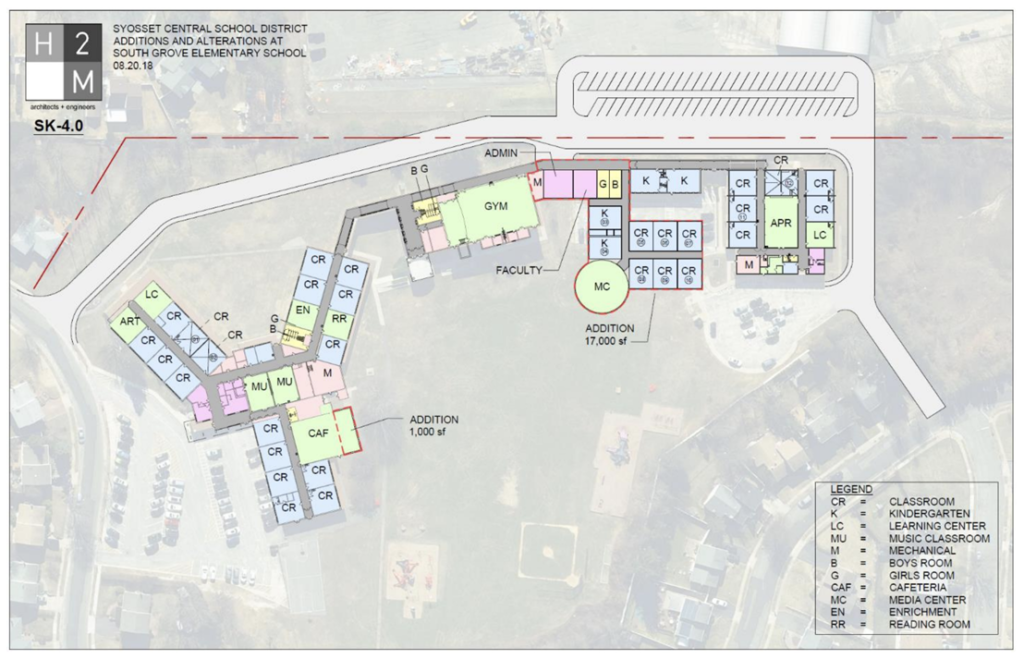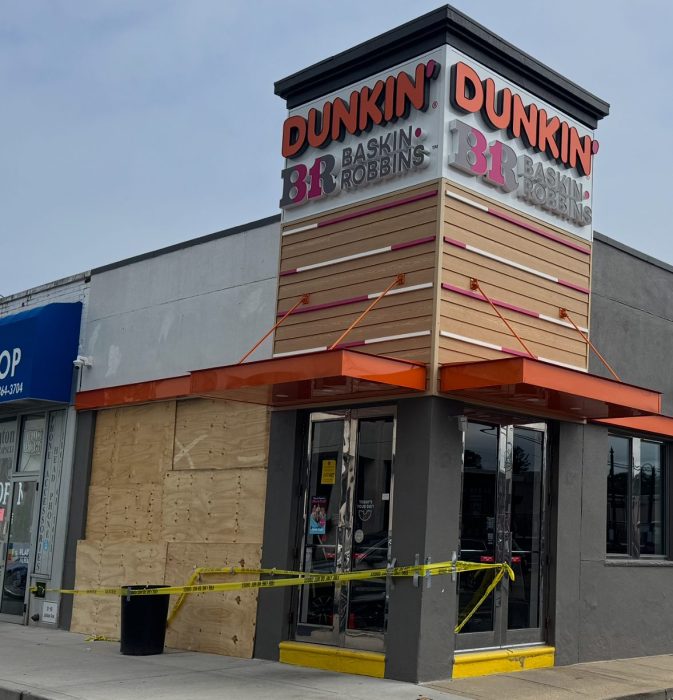Editor’s note: This is the third in a series of articles regarding the Syosset School District’s response to the Draft Environmental Impact Statement (DEIS) unveiled back in March by the developer of Syosset Park. It is seeking town approval and zoning changes to put up a mixed-use project that includes housing, office space, hotels and retail on a 92.8-acre lot at the Corner of Miller Place and Robbins Lane in Syosset.

The comment period for the DEIS ended on Aug. 31, and the district’s board of education held a special meeting on Aug. 28 at the South Woods Middle School to summarize its objections. A key concern for the district was how development of the property, which encompasses two former Superfund sites, would affect South Grove Elementary School, situated next to the acreage.
The part of the DEIS in which the administration was on solid ground was what Superintendent Thomas Rogers called “all those things that are within the realm of our expertise—enrollment, facilities, and the revenues generated [by the full build-out of the site].”
Syosset Park envisions 625 housing units, and the DEIS projects an influx of 243 school-age children when all the condos and townhouses are sold.
The consultant hired by the district came up with a figure of 381.
“We do enrollment projections. It’s what all schools do to try to predict the future,” Rogers stated as slides with figures and graphs flashed on the screen. “We have seen a [two-year] reversal of a 10-year [downward] trend in our enrollment. Two years does not a trend necessarily make, but it’s certainly something we’re attentive to. When you have a nice, well-established trend, it’s easy to predict enrollments. When you have a trend reversal that you’re uncertain about, it’s hard to know if that’s a permanent reversal—or if it’s a blip.”
Observed Rogers, “The whole point of the slide is that the assertion in the DEIS that our enrollment has been dropping and therefore we could accommodate all these new students…[does not] hold up, no matter which scenario we use to predict enrollment.”
The bottom line?
“Because we don’t have the room for this enrollment, we would have to construct something new,” said Rogers, rejecting as not viable suggestions in the DEIS that the district could increase class size, or eliminate classrooms used for other purposes, or restructure where it places its pupils.
“The district does not have the property to put up a new school,” said Rogers.
The alternative scenario was an expansion of existing elementary schools, including Robbins Lane—about half a mile from the site. The district asked its architects to calculate and render where the additions would go at the schools.
“Again no one is suggesting that the district is proposing these. We just needed a way to justify the numbers we came up with,” cautioned Rogers after showing these architectural plans,
The proposed wings at both schools would add 34,000 square feet and cost close to $22 million. Rogers noted that on an annual basis, debt service was estimated at $1.2 million.
The conclusion was that “the district elementary schools do not have adequate additional capacity, and over time, [its] secondary (middle and high) schools may face capacity concerns as a result of the proposed project.”
Further, “The district does not have excess capacity at the elementary level to absorb a large number of new students from Syosset Park. The new students would necessitate creation of excess facility capacity or else risk overcrowding redistricting of existing facilities.”
Disputing The Revenue
The DEIS estimated that when the project was completed it would contribute $12 million a year in property taxes to the school district. Further, this revenue would cover the costs of educating the influx of new students.
Rogers called the figure very optimistic and assumed the district would be able to “fully capture the taxes generated.”
Topping the list of concerns was tax abatements that the developers would inevitably ask for, and which result in a payment in lieu of taxes (PILOT) that would cut into the $12 million figure.
“We tried to duplicate their analysis of how their properties would be assessed and how much it would be taxed by the county, but we were unable to do so even though we talked to the county’s assessor’s office,” Rogers said. “They are doing a countywide systematic review reassessment and we don’t know for the multifamily dwellings if they’d be in Class 1 or Class 2. The [assessor’s office] was absolutely unwilling to give us a number to work with.”
Rogers said the only way to get new money promised by Syosset Park “is to raise the tax levy [amount to be raised by property taxes] and so the point being that we will have to have a much larger tax levy year after year after year. Perhaps in the neighborhood of 5 percent in order to get beyond the 2 percent allowed by the existing tax cap and capture this new revenue.”
He added, “We think it’s unrealistic to think that the district will tax at 5 percent for five years in a row when the district has tried hard to keep the levy in the low twos for the duration of the time the tax cap has been in place.”
The district’s conclusion: Syosset Park would swell enrollment, and therefore increase capital and operating costs to the district and its taxpayers.



























